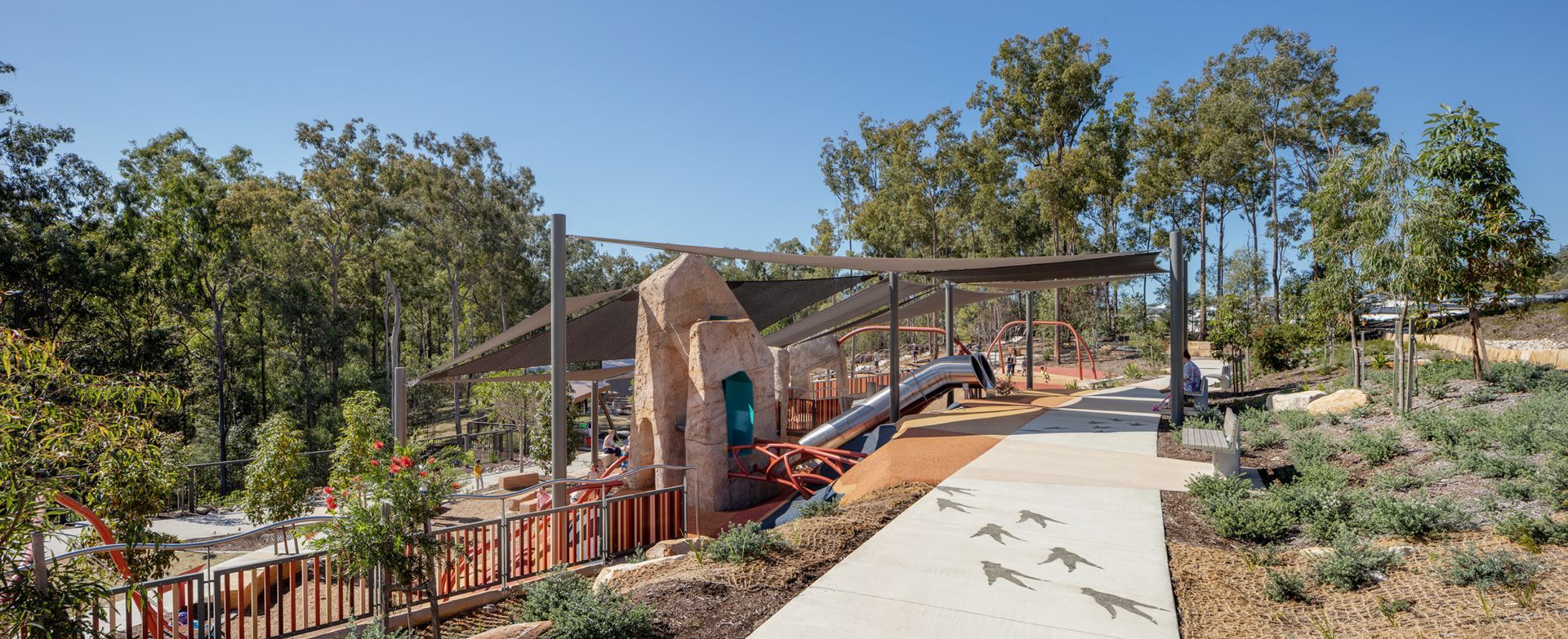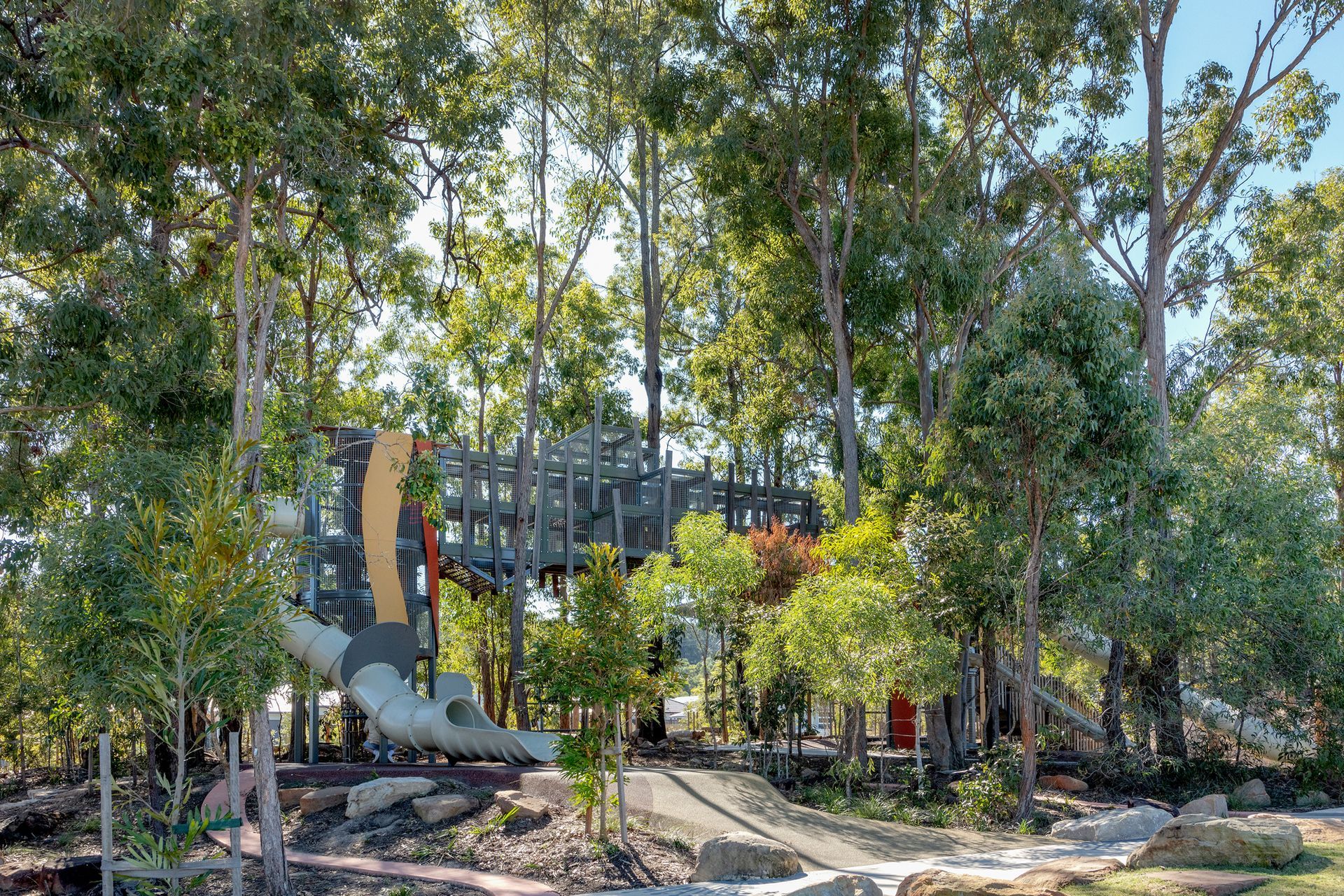Jim Somerville Bridge, Narrabeen Lagoon Stage 2.
| Client | Warringah Council |
| Design Partners | Thompson Berrill Landscape Design |
| State | New South Wales |
Completing the loop for one of Sydney’s most precious natural assets.
Narrabeen Lagoon is the largest coastal lagoon in Sydney. It is a precious natural asset and recreational resource enjoyed by canoeists, windsurfers, paddle boarders, swimmers, fishers, day trippers and residents. Stage 1 of the Narrabeen Lagoon Trail was completed in 2011.
Stage 2 was the missing link that finally allowed complete circumnavigation of the lagoon. It was also the most complex stage of the development, requiring the construction of two bridges across bushland creeks and the resumption of land used by the Sydney Academy of Sport and Recreation and Cromer Golf Club. All with minimal disruption of the fragile riparian zone, the interface between the land and water.
Our involvement.
Fleetwood, Warringah Council and landscape architects, Thompson Berrill Landscape Design, collaborated in a multi-skilled team to deliver the most aesthetic and cost-effective result possible for Stage 2 of the trail, while maintaining full environmental protections.
Following our proprietary project methodology, our technical, operations and construction teams carefully considered the project vision, brainstormed the challenges and developed detailed strategies for dealing with any issues well before construction actually began. The benefits of this were particularly evident in the innovative methodology used to successfully install the two new bridge structures across South and Middle Creeks.
How does this project inspire people to love the outdoors?
After decades of campaigning by local activists, the completed Narrabeen Lagoon Trail adds walkers, cyclists and wheelchair users to the list of people who will benefit from access to its shores.
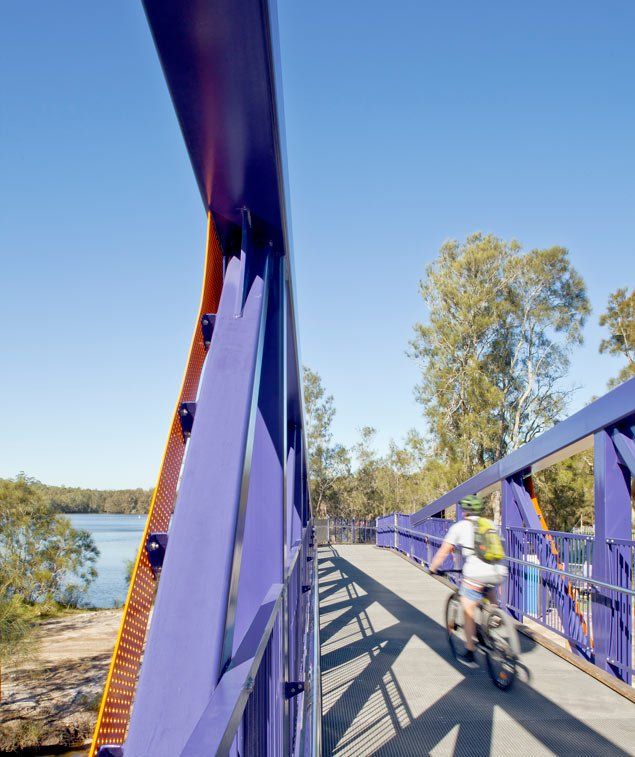
-
Design Challenge
The trail upgrade was challenging due to the high design standards required and considerable site constraints. It was particularly important for the design of the new structures to take into account the environmental sensitivity of remnant vegetation.
The most challenging individual feature was the design of the 52m Longreach truss bridge – especially when it became clear the designs in the original tender were structurally unachievable.
The already-complex single span crossing was further complicated as the brief also required no structural members to be overhead, particularly challenging as conventional construction methods couldn’t be used for environmental reasons.
-
Construction Challenge
Working in such a sensitive ecological area demanded extra care, especially with the construction of the bridges. Fleetwood made use of adjacent land at the nearby golf course and Sports Academy to undertake the construction, so disturbance to the area around the lagoon and creeks was kept to an absolute minimum.
The timing of the construction window was also heavily restricted due to the breeding cycle of native bird species that nest in the local area.
Due to the constraints of the site, the bridges had to be lifted into place fully assembled. This required the very careful use of large machinery to carry out the task safely.
-
Innovations
Using conventional pontoons to install the new bridges risked damage to the fragile riparian zone through potential oil spills and impact damage.
Further investigations showed the groundwork required to set up cranes to lift the bridges into place was largely the same as for the pontoons, so we eliminated the pontoons and used the cranes to carefully lift the bridges directly into place – an elegant, though more difficult solution, given one of the bridges was 52 metres long.
-
Features
- 34 metre bridge over South Creek
- 52 metre bridge over Middle Creek
- Concrete paths
- Elevated boardwalks
-
Safety & Risk Considerations
As was the case with Stage 1, working in and around the lagoon required careful safety planning to minimise risks for all crews, contractors and the local community.
-
Sustainability Considerations
Preserving the natural environment was a significant consideration from start to finish. Amongst many influences on the project, it saw construction staged to ensure the native endangered Australasian Bittern (Botaurus Poiciloptilus) population was able to nest in peace.
The choice to use land-based cranes, rather than pontoons, meant the local riparian zone was protected from oil spills and the creeks were able to remain open. No sediment controls were required which also reduced the risk of flooding and protected the local wildlife.
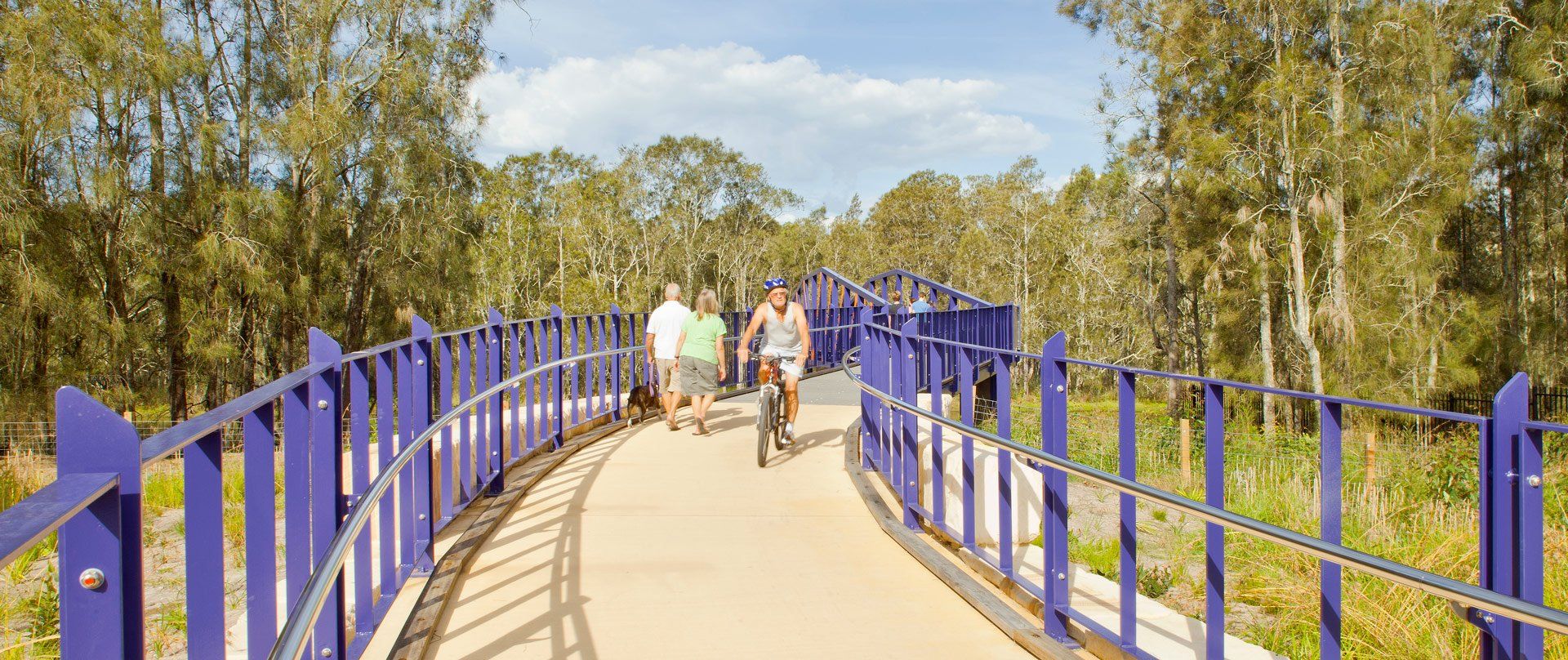
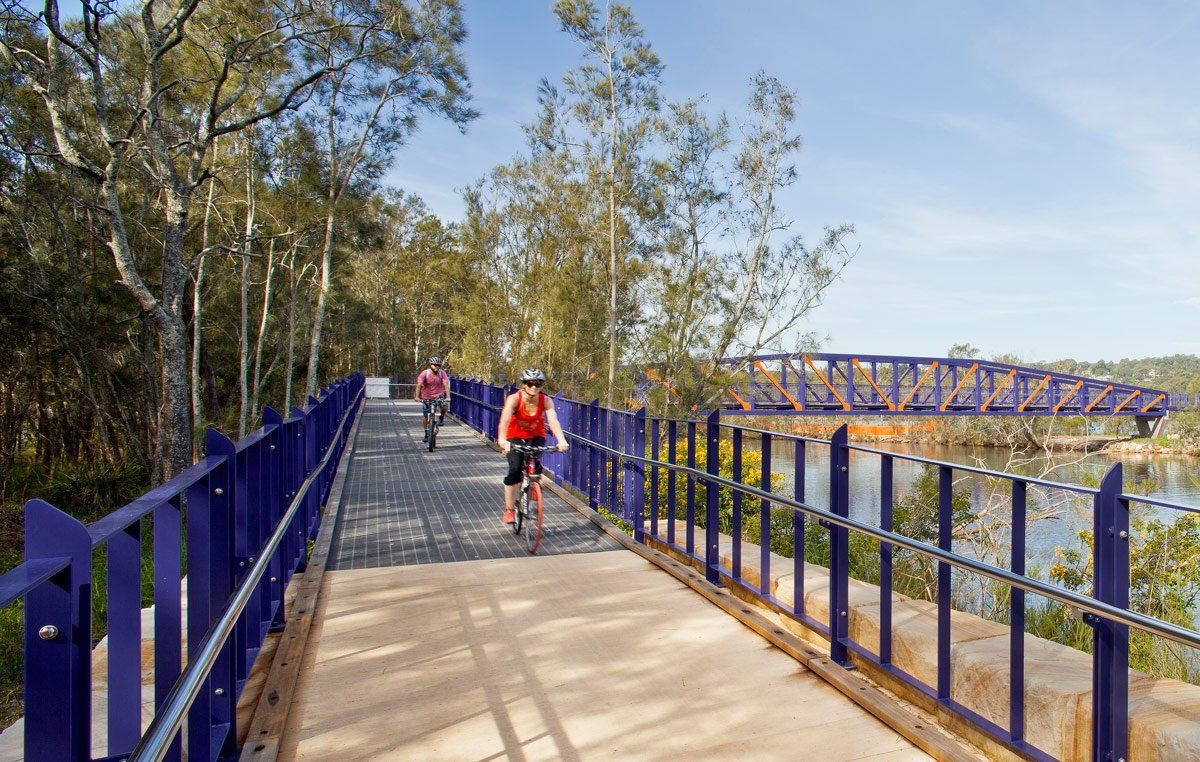
“We had strong design intentions and the design had a framework we wanted to achieve - the form, colour, shape, and the way that is was constructed. Fleetwood took that concept and successfully translated it into the built form. They’ve done an excellent job.”
Glen Berrill
Director
at Thompson Berrill Landscape Design
Awards
We are honoured to have been awarded the following
| Parks and Leisure Australia Award of Excellence | 2015 |
Other
Projects.
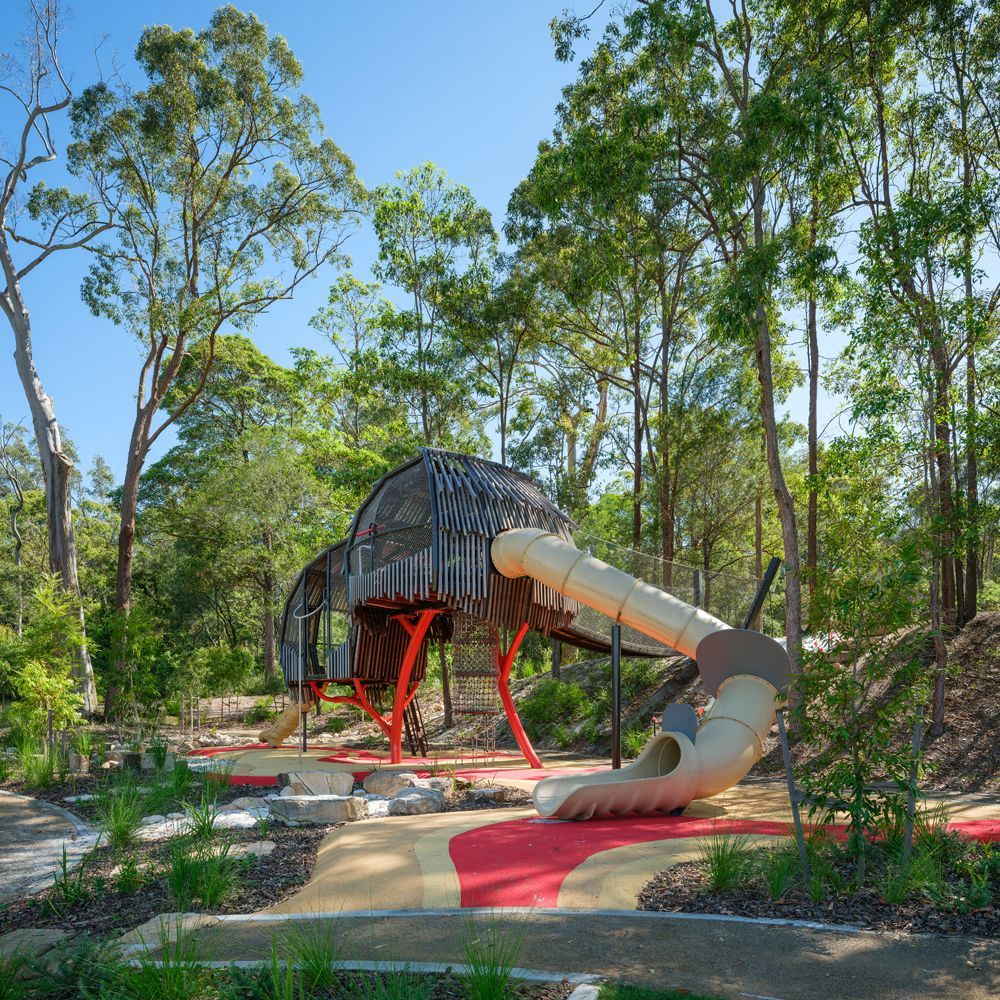
Explore
Certifications
Environmental Management : ISO14001
Quality Management : ISO 9001
OHS Management : ISO 45001
All Rights Reserved | Fleetwood Urban | Privacy Policy


